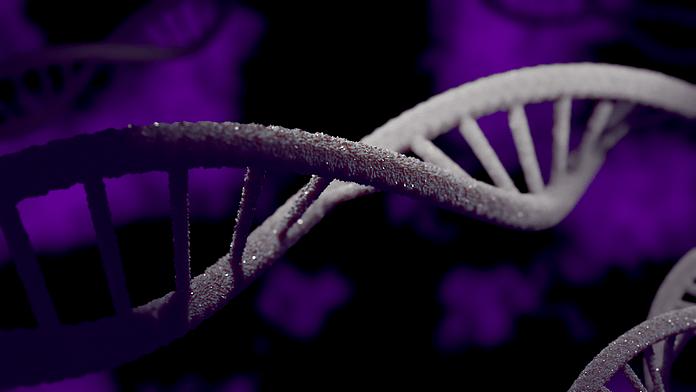A study by the Max Planck Institute for Biology in Tübingen (Germany) and the University of California, Davis (USA) challenges our traditional view of evolution, which occurs through random mutations within species’ genomes. These findings will change our approach to plant domestication, as well as to treating cancers.
For a time, discoveries in genome biology have inspired a re-examination of traditional views. It is now known that nucleotide composition, epigenetic properties, and changes in DNA repair can influence the potential for mutations to occur at different locations in the genome.
If a mutation gives any advantage to an individual at a particular time, it is likely that it will be retained and passed on to subsequent generations. This is not the case for deleterious mutations that will not be transmitted, as they imply, for example, the survival of the individual or his ability to reproduce, and thus eliminated by natural selection.
As Gray Munro, associate professor in the Department of Plant Sciences at the University of California, Davis and lead author of the study, notes, We’ve always thought about mutations that appear by chance throughout the genome. In fact, it turns out that the mutation pattern is not only very random, but also non-random in a way that benefits the plant. ».
A plant that protects its heritage
Researchers are interested in species Arabidopsis thaliana (commonly called “women’s Arabite”), for which there is sufficient genetic data to study de novo mutations (that is, new mutations that neither parent has in their genetic heritage) on a large scale.

Plants have grown in an environment favorable to their development, even those with harmful mutations, which, according to our historical view of evolution, can be eliminated by natural selection. Thus the authors were able to list all the mutations that appear and analyze them statistically, in order to determine whether these mutations are related to characteristics of epigenetic inheritance, that is, to factors that regulate and control genes, but are not encoded by DNA sequences. .
The researchers have succeeded in highlighting the regions of the genome that appear to be more susceptible to mutations, and the regions where mutations are rare. They then linked these differences, on the one hand, to the site of the mutation, and on the other hand, the quality of the affected genes. Indeed, in the first case, the frequency of mutations was 58% lower in the gene bodies than in the adjacent gene space. In the second case, mutations were fewer in number within the vital genes of the plant, in contrast to genes that present specialized functions (eg, environmental response).
« These are the regions of the genome [contenant les gènes vitaux] Most vulnerable to the harmful effects of new mutations Weigel explained, Thus DNA damage repair appears to be particularly effective in these regions However, he specifies that “Important areas […] It can also evolve, albeit at a slower rate than other parts of the genome.”
Protective elements for related genes in human medicine
Another key finding: DNA-binding proteins influence whether or not mutations occur. Plant essential genes have strong genetic related properties (repair, regulation of gene expression) resulting in a low mutation rate. The plant protects these vital genes from mutations, a so-called mutational bias. To understand the adaptive value of this mutation bias, consider the example of loaded dice (epigenetic factors) with a low probability of rolling out low numbers (i.e. harmful mutations), and therefore a higher probability of rolling out high numbers (i.e. beneficial mutations).
So these discoveries can help us predict which genes are likely to be susceptible to mutation, and the key elements involved in the development of diseases in humans, such as cancers. This would allow Protecting human genes from mutations Monroe says.
It is clear that there is a need to test the degree and extent of mutation bias later onArabidopsis (Study plant). Since this adaptive mutation bias is a product of evolution, it may vary between organisms. In light of these early findings, mutation is no longer emerging as a directionless force in evolution, but as a potential new tool for understanding evolution and useful for human medicine.
